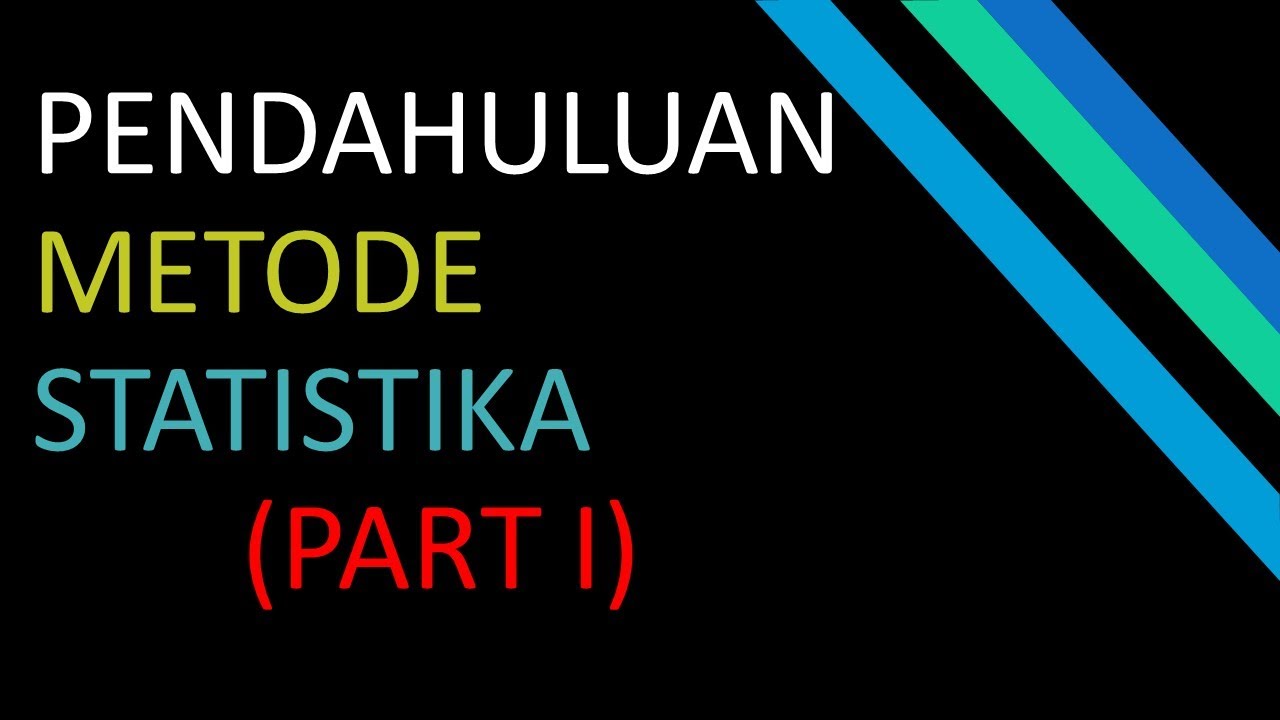Importance & Limitations of Statistics - Introduction | Class 11 Economics Chapter 1 | CBSE 2024-25
Summary
TLDRThis video script delves into the importance and limitations of statistics. It covers key concepts like homogeneous data, the misuse of data, and the necessity for unbiased research. The script emphasizes how data analysis requires uniform and homogeneous data, without which statistical conclusions may be unreliable. It also highlights that statistical results are often true only on average, particularly in large data sets. The lecture encourages students to understand both the strengths and limitations of statistical tools and methods for accurate research outcomes.
Takeaways
- 😀 Homogeneous data refers to data that is similar in nature, making it easier to compare and analyze in statistical studies.
- 😀 Misuse of data can occur when statistical methods are not applied by trained and unbiased experts, leading to inaccurate conclusions.
- 😀 Bias in research can distort results. Researchers must remain open-minded and ensure their conclusions are based on data, not personal opinions.
- 😀 Statistics require uniform and homogeneous data for effective analysis and comparison. Heterogeneous data can complicate accurate results.
- 😀 Statistical results are true 'on average,' meaning they may not accurately reflect individual cases.
- 😀 Statistics help simplify large datasets, but they have limitations, especially when dealing with smaller, more complex data sets.
- 😀 A key limitation of statistics is that it doesn't provide 100% certainty, only approximations based on averages and probabilities.
- 😀 When analyzing data, it’s essential to understand its background and ensure it's used correctly to avoid misinterpretation.
- 😀 Data manipulation and misuse are significant risks if the researcher lacks expertise in statistical methods or proper analysis techniques.
- 😀 Proper statistical methods can lead to more accurate predictions and conclusions when applied appropriately, especially with large datasets.
- 😀 The importance of unbiased, open-minded research is critical for maintaining the integrity of statistical findings and avoiding skewed results.
Q & A
What does homogeneous data mean in the context of statistical analysis?
-Homogeneous data refers to data that is similar in nature, allowing meaningful comparisons. For accurate statistical analysis, the data needs to be uniform and similar, as in the case of perfect competition where products are homogeneous.
Why is homogeneous data crucial for performing statistical studies?
-Homogeneous data is essential because it ensures that comparisons are valid. If the data is not homogeneous, accurate analysis and comparisons cannot be made, which could lead to incorrect conclusions.
What is meant by the misuse of data in statistical research?
-The misuse of data occurs when statistical methods are not applied correctly, or when data is manipulated based on personal bias or incorrect assumptions, leading to inaccurate or misleading results.
How does bias impact the validity of statistical results?
-Bias can influence the outcome of statistical analysis by skewing the data or results in favor of one side. This can distort the objectivity of the research, leading to incorrect conclusions and unreliable findings.
What are the consequences of using biased methods in research?
-Using biased methods in research can result in inaccurate data analysis, which can affect the overall research findings. It can also lead to faulty decision-making, as the conclusions drawn from the biased data will not reflect the true nature of the situation.
Why is it important to avoid preconceived opinions in research?
-Avoiding preconceived opinions ensures that the research is objective. Research should be based on data and not influenced by the researcher's personal beliefs, as this helps to produce fair, accurate, and unbiased results.
What is the role of statistical methods in analyzing large datasets?
-Statistical methods are used to simplify and make sense of large datasets, allowing researchers to derive meaningful conclusions. These methods are particularly useful in understanding trends and patterns in large populations, though they have limitations when applied to smaller datasets.
What does it mean when it is said that results are true only on average in statistics?
-In statistics, results are true on average, meaning that while the overall result may reflect a general trend or pattern, individual cases may vary. For example, if the average score of a class is 60, it doesn’t imply that every student scored exactly 60.
What is the limitation of statistics when working with small data?
-When working with small datasets, statistics may not capture all the variations and nuances present in the data. Small datasets are prone to errors and inconsistencies that can distort the results of statistical analysis.
What is the importance of understanding the limitations of statistical methods?
-Understanding the limitations of statistical methods is crucial for ensuring that the conclusions drawn from data are valid and reliable. Recognizing these limitations helps researchers avoid over-generalizing or misinterpreting the results, particularly when analyzing smaller or more complex data sets.
Outlines

This section is available to paid users only. Please upgrade to access this part.
Upgrade NowMindmap

This section is available to paid users only. Please upgrade to access this part.
Upgrade NowKeywords

This section is available to paid users only. Please upgrade to access this part.
Upgrade NowHighlights

This section is available to paid users only. Please upgrade to access this part.
Upgrade NowTranscripts

This section is available to paid users only. Please upgrade to access this part.
Upgrade NowBrowse More Related Video

Business Statistics and Analytics, business statistics and analytics aktu notes, mba, bba, dwivedi

Measures of Variability (Range, Standard Deviation, Variance)

ENGINEERING DATA ANALYSIS LESSON 1 TYPES OF DATA

Pendahuluan Metode Penelitian Part I

Statistical Inference: Introduction and Terminology (in Hindi)

MINI-LESSON 1: Breaking down intuitively the concept of standard deviation. Why pple don't get it.
5.0 / 5 (0 votes)